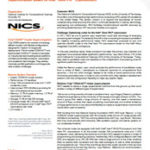It’s been a good week for Arm: the Fugaku supercomputer at Japan’s Riken research center was named no. 1 on the TOP500 listing of the world’s most powerful HPC systems, and today, the Leibniz Supercomputing Centre (LRZ) in Munich announced it will deploy HPE’s Cray CS500 with Fujitsu A64FX chips based on the Arm architecture – the same processor used in Fugaku (and then there’s Apple switching from x86 for new Arm chips).
ARM-based Fugaku Supercomputer on Summit of New Top500 – Surpasses Exaflops on AI Benchmark
The new no. 1 system on the updated ranking of the TOP500 list of the world’s most powerful supercomputers, released this morning, is Fugaku, a machine built at the Riken Center for Computational Science in Kobe, Japan. The new top system turned in a High Performance LINPACK (HPL) result of 415.5 petaflops (nearly half an exascale), outperforming Summit, the former no. 1 system housed at the U.S. Dept. of Energy’s Oak Ridge National Lab, by a factor of 2.8x. Fugaku, powered by Fujitsu’s 48-core A64FX SoC, is the first ARM-based system to take the TOP500 top spot.
COVID Camouflage: TACC’s Frontera Reveals Virus’s ‘Sugar Coating’
Researchers using the Frontera supercomputer at the Texas Advanced Computing Center (TACC) have uncovered the atomic makeup of the sugary shield on the coronavirus that could prove instrumental to the workings of the contagion, now spreading death, illness and economic destruction around the world. UCSD scientists have used about 2.3 million Frontera node hours for molecular dynamics simulations and modeling.
NICS Gets Faster Application Performance with the Cray® CS300™ Cluster Supercomputer Based on Intel® Xeon Phi™ Coprocessors
In 2011, NICS set out to explore ways researchers could take advantage of emerging processing technologies. Prompted by the shift in the computing landscape to parallelism for meeting increasing performance needs, NICS researchers proposed to port and optimize scientific codes to the Intel Xeon Phi coprocessors. To read more about this process download this white paper.







